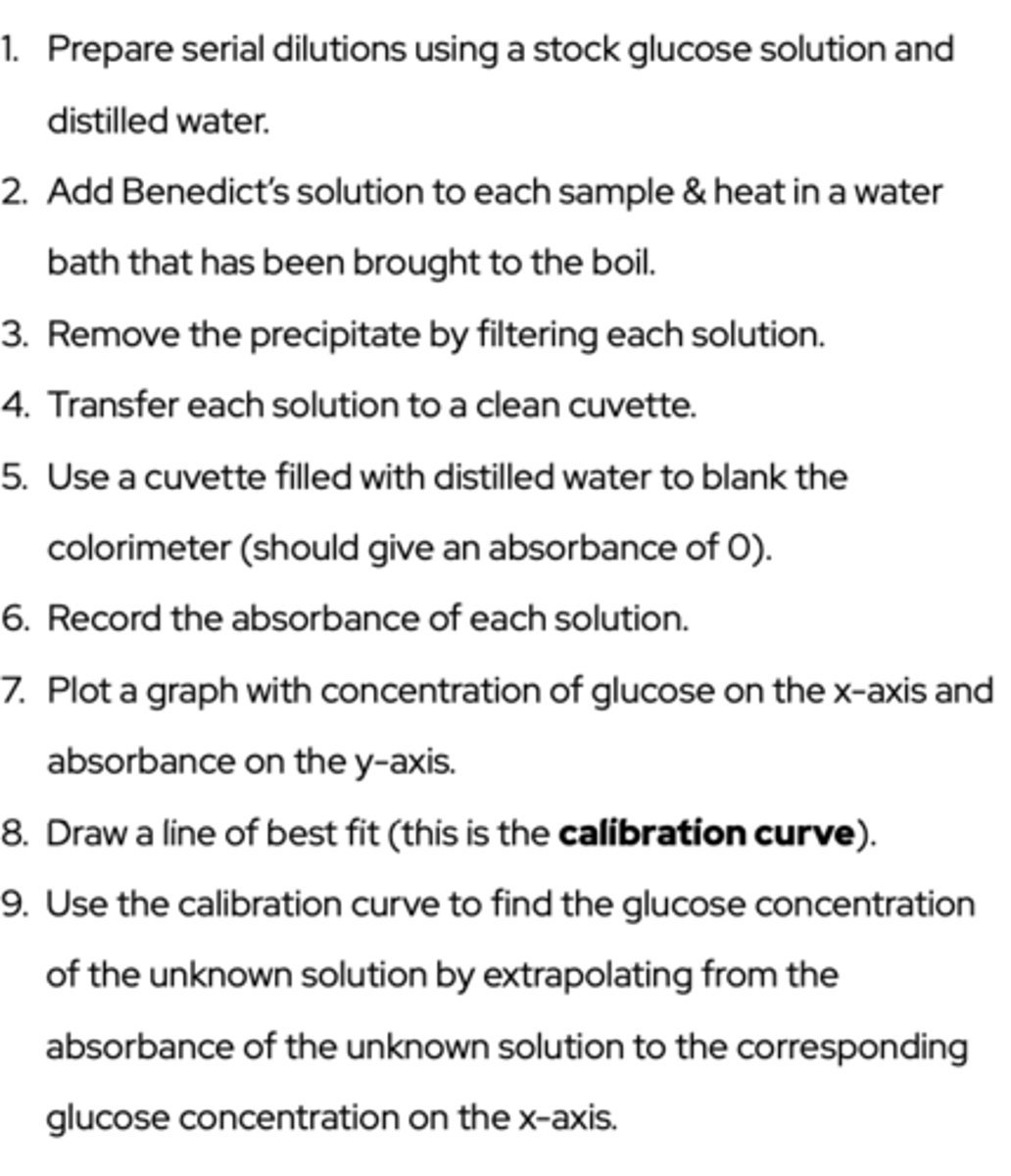RP11: Production of a dilution series of a glucose solution and use of colorimetric techniques to produce a calibration curve with which to identify the concentration of glucose in an unknown ‘urine’ sample
1/9
There's no tags or description
Looks like no tags are added yet.
Name | Mastery | Learn | Test | Matching | Spaced |
|---|
No study sessions yet.
10 Terms
What is the method for this experiment? (9)

How can Benedict's test be used semi-quantitatively? (1)
The colour of the precipitate gives an indication of the concentration of reducing sugar present
How can Benedict's test be used quantitatively? (1)
A colorimeter can be used to measure the absorbance of the solution after the Benedict's test has been carried out
Which variables should be controlled in an experiment using Benedict's test? (4)
- Volume of each sample
- Volume of Benedict's reagent
- Temperature of the water bath
- Time the samples are left in the water bath
Why is the concentration of the unknown solution only an estimation? (2)
- The intervals of concentration used to produce the calibration curve were too large.
- A line of best fit drawn by connecting the points was used to determine the concentration.
How could a student modify the method to find a more accurate concentration of the unknown solution? (1)
Repeat using more concentrations around the estimated concentration
How can the concentration of glucose be measured using a colorimeter? (6)
1. Use a range of known concentrations of glucose plus the sample with an unknown concentration.
2. Heat with an excess of Benedict's solution.
3. Filter to remove precipitate.
4. Zero the colorimeter using water or unreacted benedict's solution and use a red filter.
5. Record the absorbance for each concentration of glucose.
6. Produce a calibration curve by plotting glucose concentration (x-axis) against absorbance (y-axis) and use it to estimate the unknown sample's concentration.
Why does absorbance decrease as glucose concentration increases if the precipitate has been removed? (2)
- The higher the concentration of glucose, the more copper(II) ions are reduced.
- This results in the filtrate having a paler blue colour.
What is the relationship between absorbance and glucose concentration if the solutions are not filtered after performing the Benedict's test? (2)
- Absorbance will increase as glucose concentration increases.
- The higher the concentration of glucose, the higher the mass of precipitate that forms, meaning more light will be absorbed.
Why can a high glucose concentration cause glucose to be present in the urine of a diabetic person? (2)
- High glucose concentration in the filtrate results in glucose carrier proteins becoming saturated.
- This means not all the glucose is selectively reabsorbed, so some glucose remains in the urine.